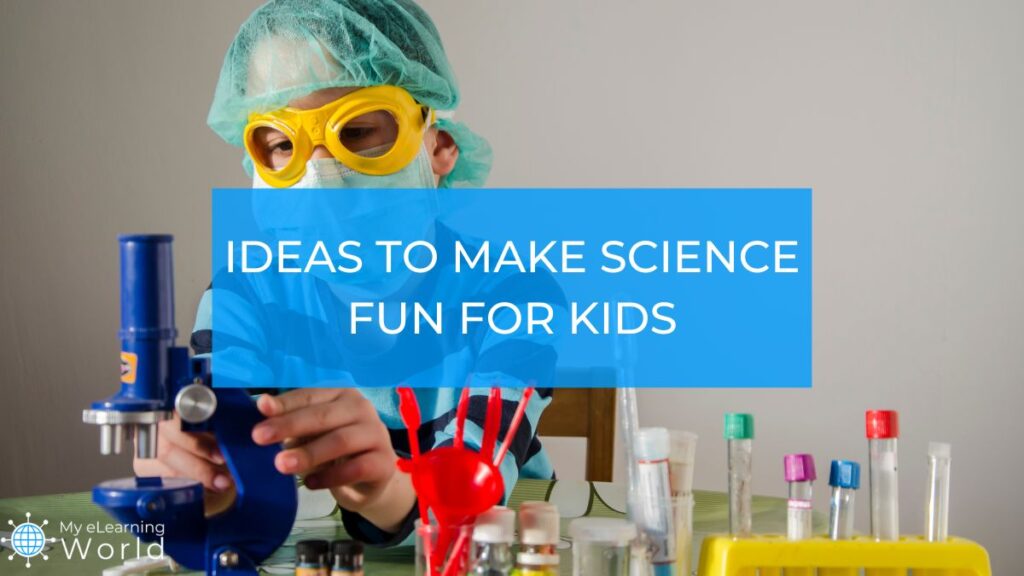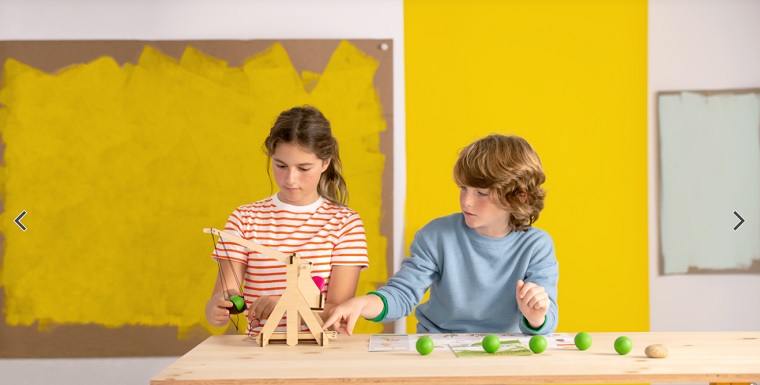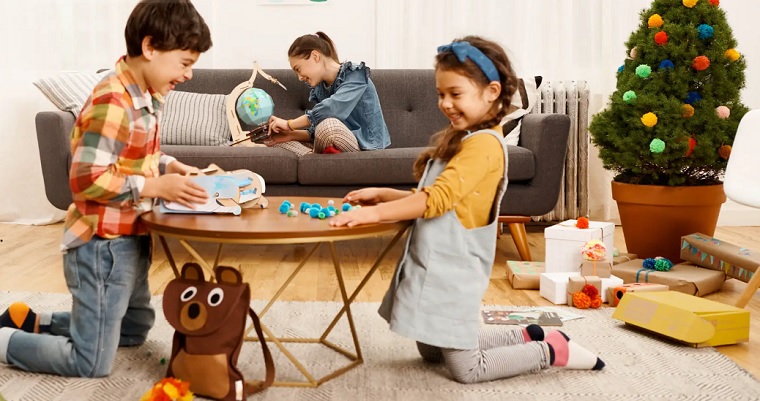Looking for ideas on how to make science fun for kids? Feel like you’ve tried everything with no results?
Science is one of the most important and fascinating subjects kids learn about in school. Stars, flowers, robots, animals, computers – whatever your learner is interested in, there’s probably a way to connect their favorite interest to science.
For some children, though, tackling STEM (Science, Technology, Engineering, and Mathematics) related topics can feel overwhelming.
They may feel as if the concepts are too confusing for them to grasp.
They may only encounter worksheets and textbook activities at school, which might fail to grab their interest.
Or they may simply not see themselves as “science and math” types. A surprising number of young people feel intimidated by these subjects, simply based on their own self-image.
If your child isn’t head over heels for science subjects, don’t despair. There are plenty of ways to help them get involved and begin to discover the scientist within.
Read on to learn about some of our favorite ideas on how to make science fun for kids.
Disclosure: Some of the links in this article are affiliate links, meaning at no additional cost for you, we might get a commission if you click the link and purchase.
5 Ways to Make Science Fun for Kids
1. Try KiwiCo’s Hands-On STEM Kits
 KiwiCo| Tinker. Create. Innovate. With hands-on projects that make learning fun!
KiwiCo| Tinker. Create. Innovate. With hands-on projects that make learning fun!
KiwiCo makes STEM learning fun and exciting for kids, while taking the prep and planning off your plate. With themed crates that arrive at your doorstep every month, three months, or six months.
KiwiCo, a company started by a mom and engineer, is designed to deliver monthly boxes of science magic to your door.
Subscribe to one of nine specially-designed lines and receive a crate (choose between monthly, 3-month, 6-month, and 12-month options) of cool STEM activities specifically created to fascinate your child.
KiwiCo crates are tailored to different age levels and areas of interest, so you can be sure that what you’re getting will be relevant to your child.
Starting with Panda Crates, with the 0-24 month crowd in mind, and moving all the way up to the Eureka boxes (recommended for ages 12-100!), there’s something at KiwiCo for everyone.
Different lines focus on different topics, and you can change lines within your subscription at any time.
An Atlas Crate, designed to focus on geography and culture, might have your child creating their own miniature alpaca as they learn about Peru’s native plants and animals.
A box from the Doodle Crate line might focus on making your own stained glass or growing your own garden of succulents, while a Yummy Crate might include ingredients and explanations for a delicious, kid-tested recipe for your child to try out.
A Kiwi Crate might include a fun craft and experiment for the younger set, while the more advanced Tinker Crate might have your child building her own simple machine.
Each of the nine different lines of crates is created to let kids explore science concepts with hands-on, do-it-yourself experiments.
No screen time needed: these boxes are all about letting kids dive in and actually make things on their own, while connecting their activities to in-depth scientific knowledge.
KiwiCo crates are a great way to bring science concepts into the home while giving your kids something fun and exciting to make and own. These all-inclusive crates give parents an easy and exciting way to build STEM confidence while making it all seem like fun and games (because fun and games are a big part of it!).
2. Do a Nature Walk
Aside from bringing hands-on experiments into the home with options like KiwiCo, encourage your child to connect science to the larger world outside, too.
Let your child start their own observation journal. Make it fun – it could be a binder, folder, colorful notebook, or anything that they’ll want to carry around with them.
Go for nature walks or simply stroll around the yard with your child and let them record the things they notice in their journal.
Did they see a dandelion missing most of its seeds? Did yesterday’s rain puddle disappear by today? What might have caused it? What else has changed?
Learning to observe and ask questions about the natural world is a great way to help your child learn to be inquisitive when it comes to STEM.
The more questions your child is asking, the more they’re developing their own curiosity as a scientist. They’ll also begin making connections between the things they notice and wonder.
3. Find Answers Together
Once your child has become a pro at asking questions about what they see, it’s time to get them hyped to find the answers!
Devote time after your nature walk or trip around the yard to discussing what they want to find out. Use online resources or library books to figure out the answers to their burning questions.
What kind of bird is that interesting feather from, and why did it fall out? Why do certain kinds of weeds grow faster than other flowers?
Researching answers to your child’s questions is a great way to teach them to follow through and figure out new information.
Of course, not every tricky question can be explained (at least, not right away). This is also a valuable science lesson for your child. Sometimes, we don’t have all the answers… but that’s part of the fun!
Letting your child brainstorm the whys and hows of their observations can help them become more confident at drawing conclusions on their own. This skill is important for STEM, but also for other areas of school and life.
Making a habit out of noticing unusual things and researching them is a great way to set your child up for STEM success, as well as success as a learner in general. You’ll also probably learn something too!
4. Use Multiple Mediums for Science Education
We’re fortunate to live in a day and age when we have access to tons of different media options.
From television shows to documentaries to eBooks to graphic novels, we have plenty of ways to expose children to science materials.
If your youngster isn’t interested in their grade-level textbook, check out some more exciting options from the library. Ask their teacher for recommendations too.
Whether your child likes comic books, color photographs, or science fiction, there’s bound to be a science-related book that will grab their interest. Don’t forget about eBooks and Youtube read-alouds, too.
Science can be included in any kind of screen time. There are hosts of science-themed television shows and documentaries aimed at kids, whether they’re interested in unusual animals or traveling in space. Do a little digging to find the right programs for your child.
A number of online games and apps also incorporate STEM concepts and vocabulary. Since most kids see these activities as a reward, it can be a great way to give them a little extra learning as well.
While nothing can take the place of hands-on discovery (like the inclusive KiwiCo boxes provide), giving kids access to science materials in as many ways as possible is a great way to keep their interest level high.
5. Use the Power of Play for Learning
Playtime isn’t just idle downtime for kids… it’s important! Make sure you’re incorporating the four main types of play for your child so they can develop as thinkers and learners.
Pretend play is exactly what it sounds like: when your child is letting their imagination run wild.
Maybe they’re imagining they’ve gone back in time or are playing house with a friend.
Maybe they’re telling a story to a stuffed animal or carefully creating an action figure scenario.
Whatever the case, pretend play helps kids develop their imagination, curiosity, and self image.
Exploratory play is when kids are allowed to actually make things and take things apart. This is where those KiwiCo boxes really shine! Even simple tasks, though, like caring for an animal or planting a garden, can help your child explore. Participating in hands-on tasks and experiences gives kids the confidence and real-life motivation they need to become engaged in science concepts.
Free play means that your child is playing without any guidance from a grown-up. This helps your child become better at problem solving and doing things independently: both important parts of being a great STEM student!
Guided play means an adult is involved, whether they are teaching or just monitoring a child-led activity or experiment. This opens up the opportunity to engage your child in higher-level experiments and helps them learn to collaborate and listen to their teachers, too.
Making sure your child experiences all four types of play (even as they get older!) can help them build a strong foundation for STEM success.
Final Thoughts on How to Make Science Fun for Kids
With so many ways to get your child excited about science, it’s important not to give up. Keep exploring options until they experience that lightbulb moment – aha, this is actually pretty cool!
Investing in exciting monthly science experiment kits from KiwiCo is a great way to keep the learning going, since the boxes come month after month (you can also sign up for a one-time trial box before subscribing, too). It’s rewarding to watch kids start to anticipate their next science delivery!
You can also keep the interest flowing by encouraging your kiddo to ask questions, observe the natural world, and play around with different types of media.
Always keep an eye out for ways you can connect daily life and play to the science concepts your child is learning.
After all, the more ways your child connects with STEM concepts, the more they’ll start to see themselves as a scientist, researcher, builder, and discoverer… which is what learning is really all about.
What other ideas do you have on how to make science fun for kids? What have you tried? Let us know your thoughts by commenting below.








